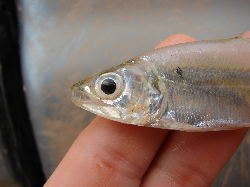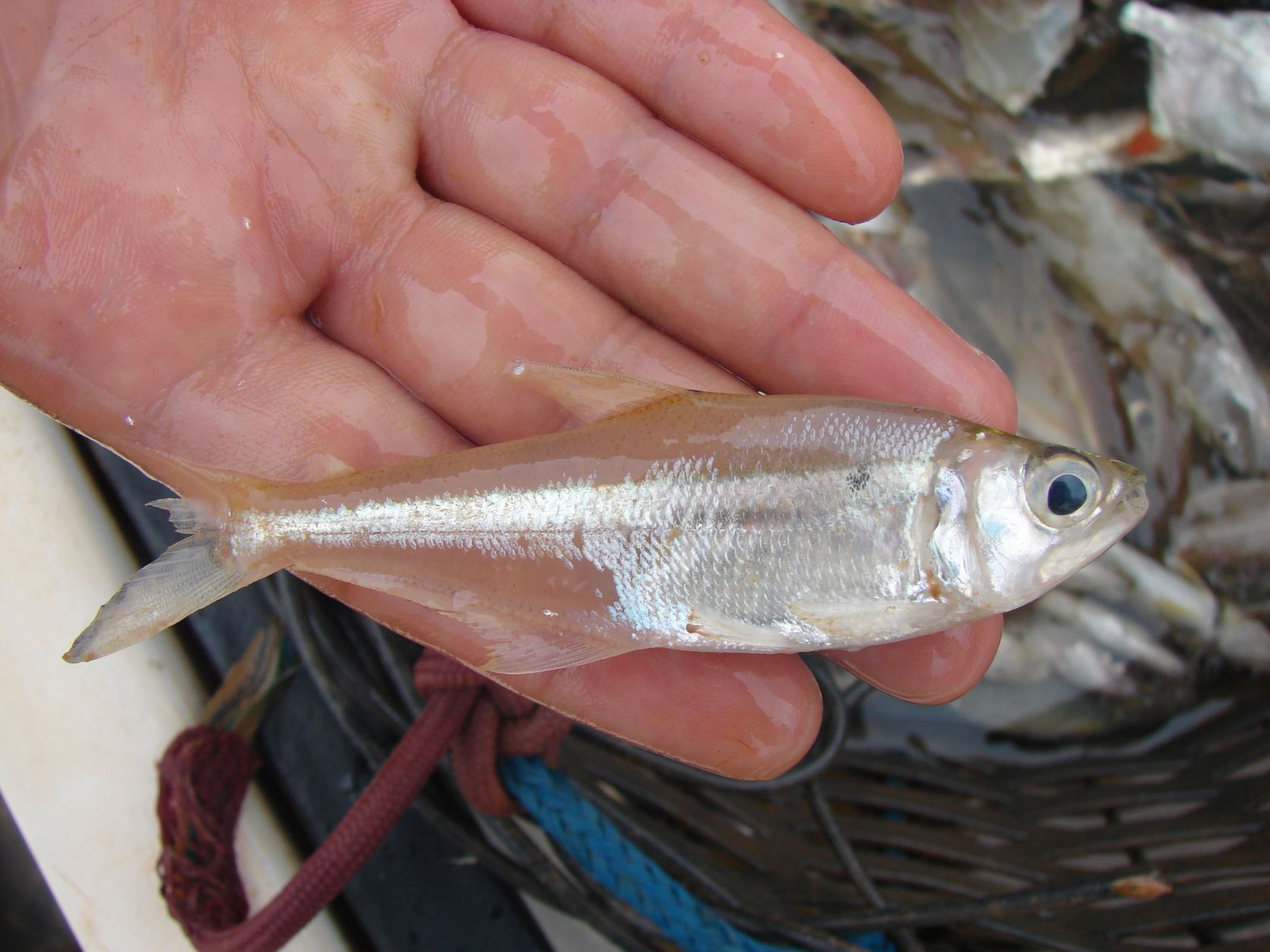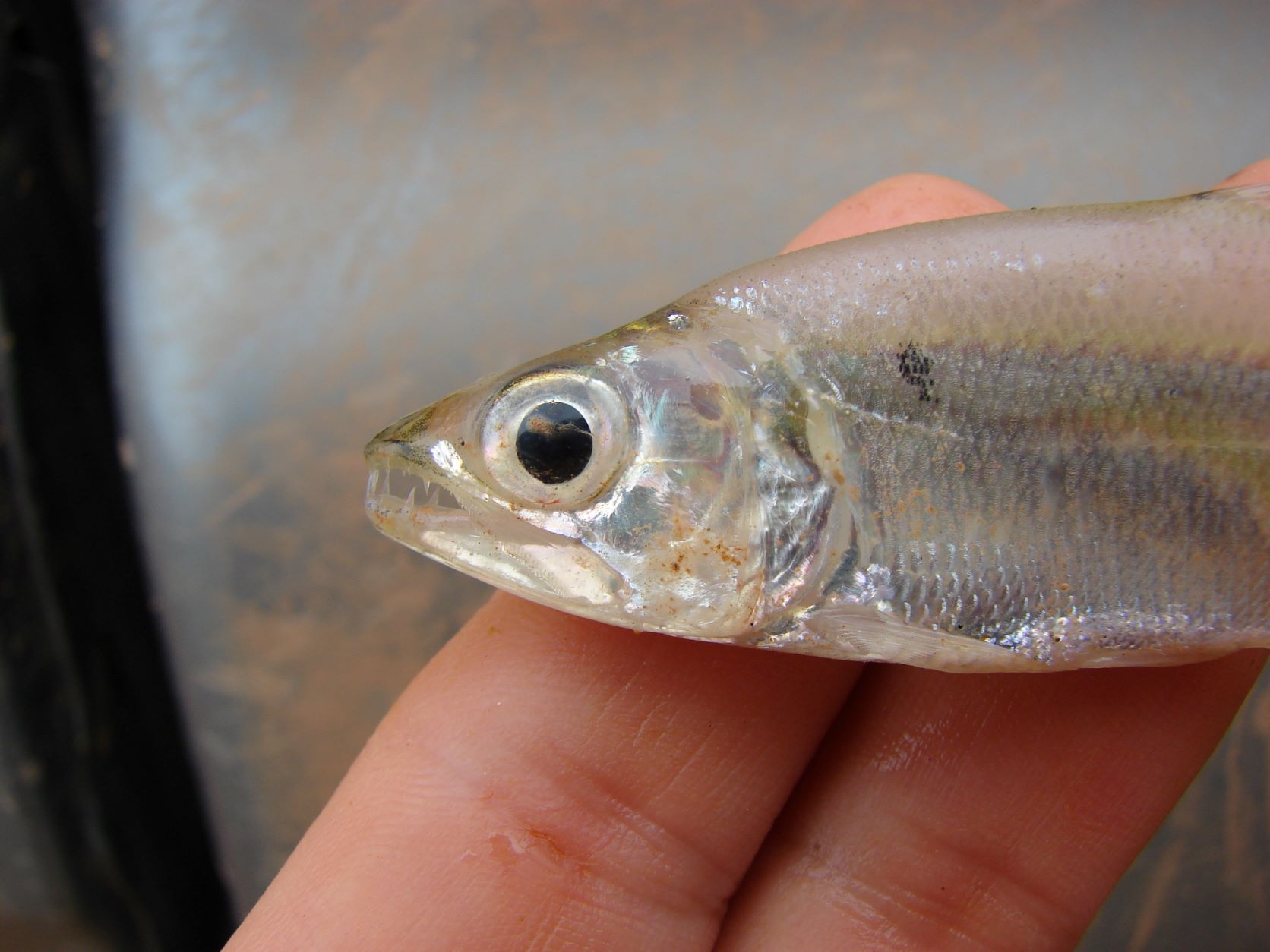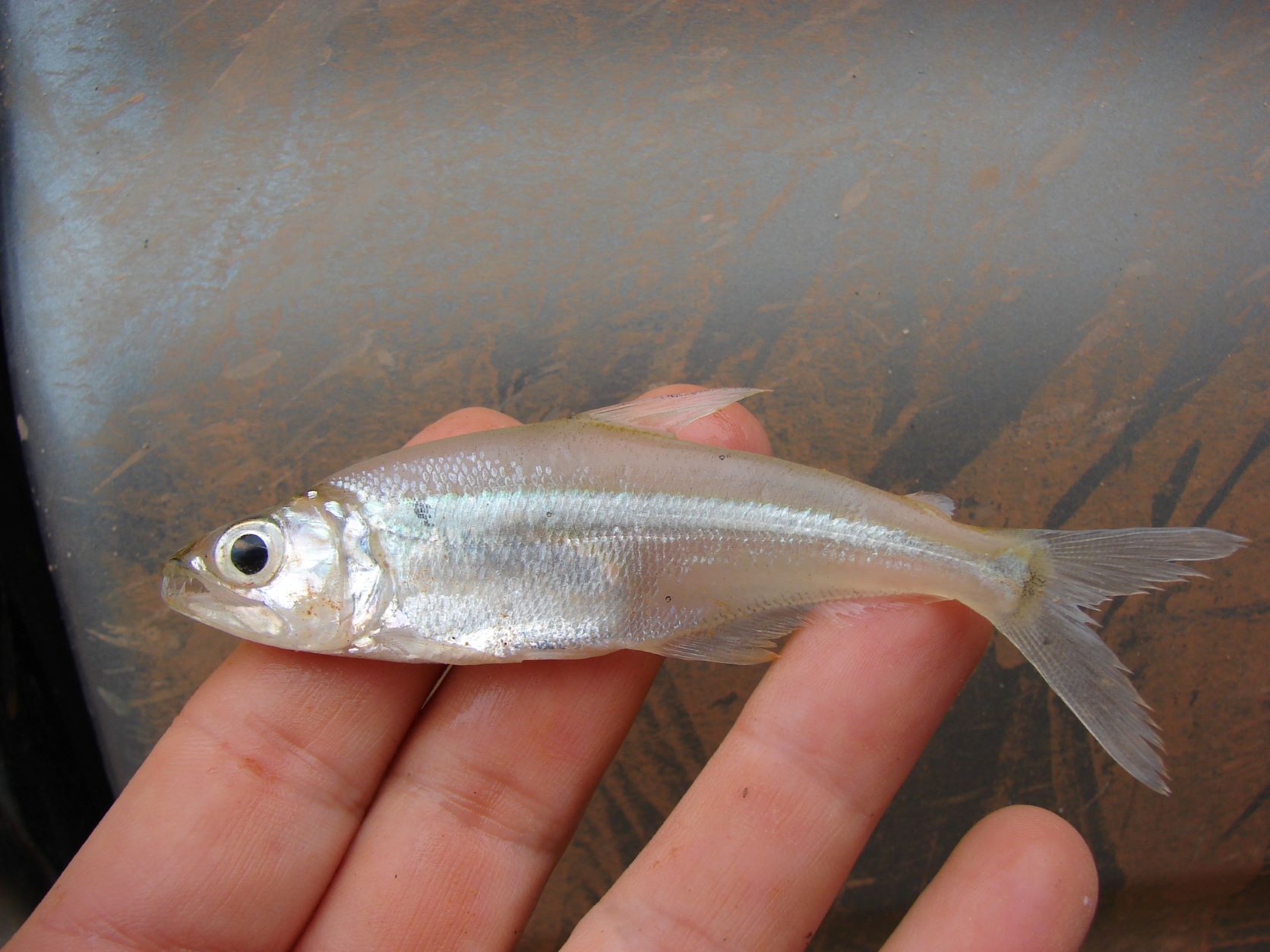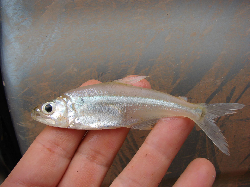Acestrocephalus acutus Menezes, 2006
Description
Dorsal soft rays (total): 11; Anal soft rays: 33 - 39; Vertebrae: 37 - 39. Among the species of Acestrocephalus with dark humeral blotch absent, this species can be separated from Acestrocephalus sardina and Acestrocephalus nigrifasciatus by possessing a smaller eye (28.0- 31.7 vs. 32.6-36.5 in Acestrocephalus nigrifasciatus and 31.3-37.4 in Acestrocephalus sardina); and an oblong dark blotch at caudal base instead of the triangular dark blotch present on the caudal base of those two species. Distinguished from Acestrocephalus pallidus by having an oblong dark blotch at caudal base (vs. absence of dark blotch); and differs further from Acestrocephalus pallidus by the shape of the muscular hiatus of the pseudotympanum and the muscular arrangement around it. Can be diagnosed from Acestrocephalus anomalus by having more teeth in the posterior row on dentary (28-36 vs. 23-28) and fewer teeth in the external tooth row on premaxilla (6-8 vs. 8-11) (Ref. 75890).
Common Names
No common names available.
Taxonomic Hierarchy
Kingdom: Animalia
Phylum: Chordata
Class: Teleostei
Order: Characiformes
Family: Characidae
Genus: Acestrocephalus
Species: Acestrocephalus acutus Menezes, 2006
Climate Zone
Location
Biology
Life cycle and mating behavior
Habitat
benthopelagic
